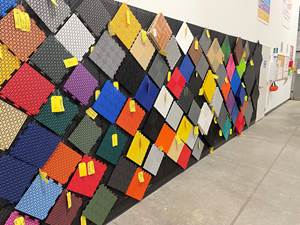Molder Strives to Align People, Processes, Technology
Wisconsin Plastics’ ‘transformation’ takes into account all aspects of its business, with the help of its machinery sales rep.
Mid-sized processors face a host of labor and technology challenges to remain cost competitive and efficient. Jim Christensen, owner of Wisconsin Plastics, Inc. (WPI), in Green Bay, Wis., recognized those challenges and has been assembling a management team to face them as part of a company-wide “transformation.”
The custom molder operates from a 120,000 ft2 plant and runs 37 presses from 55 to 1000 tons. It continually seeks to make labor and technology more time- and cost-efficient by focusing on the things that it feels really make a difference. Bruce Wendt, the company’s v.p. operations, elaborates: “All molders have access to the same equipment. We all use the same raw materials. It’s the training and alignment of the people that makes all the difference, with everyone focused on quality.”
Transforming a manufacturing operation is a tall order. At WPI, it entailed adapting to new manufacturing equipment and processes. And WPI’s equipment source, Jeff Golden, president of Chicago-based Golden Equipment, has often been the point man helping the molder through the transition. “Smaller processors need to be really good at using outside intelligence,” says Golden. “They don’t have the luxury of having someone focus exclusively on technology.”
WPI also works to fine-tune its MRP system to gain ever more precise control over materials and delivery. “In our business, the two largest challenges are labor and raw materials and how you create manufacturing systems that keep them flowing,” Wendt says. Customers are changing order due dates and quantity almost daily, he notes. Raw-material supply lines, however, require that WPI place orders a month or two in advance. The challenge is to keep materials turning and to maintain as low an inventory level as possible, in the face of unpredictable customer demands.
WPI is working to get its systems to the next level so that when an order changes WPI can pull or push materials without having to store them on the floor. Wendt explains, “We get an order for parts and put in an order for raw materials, and then the next day the customer pushes order out by a week. You need blanket purchase orders with release dates that allow you to negotiate with suppliers and to have materials delivered on demand. You also need to have a system where you can continuously watch the effect of those order changes on your internal inventory and labor levels.”
WPI uses an ERP system from IQMS, Paso Robles, Calif., with custom reporting that WPI continuously refines. Wendt says, “We have more than 400 different item codes and components we use, and we stock about a day and a half worth of product right now.”
WPI does value-added assembly work on some of the products for which it molds components. The company also develops prototypes and manages distribution. As a result, labor planning is also critical. WPI uses scheduling systems with visual reporting, where the MRP/ERP can roll up demand, in combination with close customer-service relationships.
The technology and labor issues in using manufacturing transformation as a competitive advantage merge with the need for employee training and empowerment. “You can’t treat your people as if they are machines, whether it’s a temporary labor pool or seasoned employees,” Wendt says. “They all must understand expectations. They all must be responsible for their own data, inspection, reject reporting, and production reporting.”
The culture WPI is creating emphasizes taking good manufacturing ideas from anywhere and testing them in the plant’s “Area of Excellence,” a concept introduced by Golden. “Any new idea our team comes up with that exemplifies what we’re trying to achieve is piloted in that area,” Wendt says. “This sets the vision for how we want the rest of the operations to work. We work out the procedures on a small scale and broadcast from there to the rest of the plant.”
Related Content
Injection Molder Bases Company Culture on Employee Empowerment
After more than two decades in the industry, Rodney Davenport was given the opportunity to create an injection molding operation in his own vision, and — in keeping with the product he was making — to do so from the ground up.
Read MoreBack in the Family Business
In its 45th year, Precision Molded Plastics has carved out a technology and market niche, growing not just when opportunities arise but when they make sense, after its leader changed careers to keep the family business from changing hands.
Read MoreUS Merchants Makes its Mark in Injection Molding
In less than a decade in injection molding, US Merchants has acquired hundreds of machines spread across facilities in California, Texas, Virginia and Arizona, with even more growth coming.
Read MoreEvolving Opportunities for Ambitious Plastics Recycler
St. Joseph Plastics grew from a simple grinding operation and now pursues growing markets in recycled PP, food-grade recycled materials, and customized post-industrial and post-consumer compounds.
Read MoreRead Next
People 4.0 – How to Get Buy-In from Your Staff for Industry 4.0 Systems
Implementing a production monitoring system as the foundation of a ‘smart factory’ is about integrating people with new technology as much as it is about integrating machines and computers. Here are tips from a company that has gone through the process.
Read MoreBeyond Prototypes: 8 Ways the Plastics Industry Is Using 3D Printing
Plastics processors are finding applications for 3D printing around the plant and across the supply chain. Here are 8 examples to look for at NPE2024.
Read MoreLead the Conversation, Change the Conversation
Coverage of single-use plastics can be both misleading and demoralizing. Here are 10 tips for changing the perception of the plastics industry at your company and in your community.
Read More















